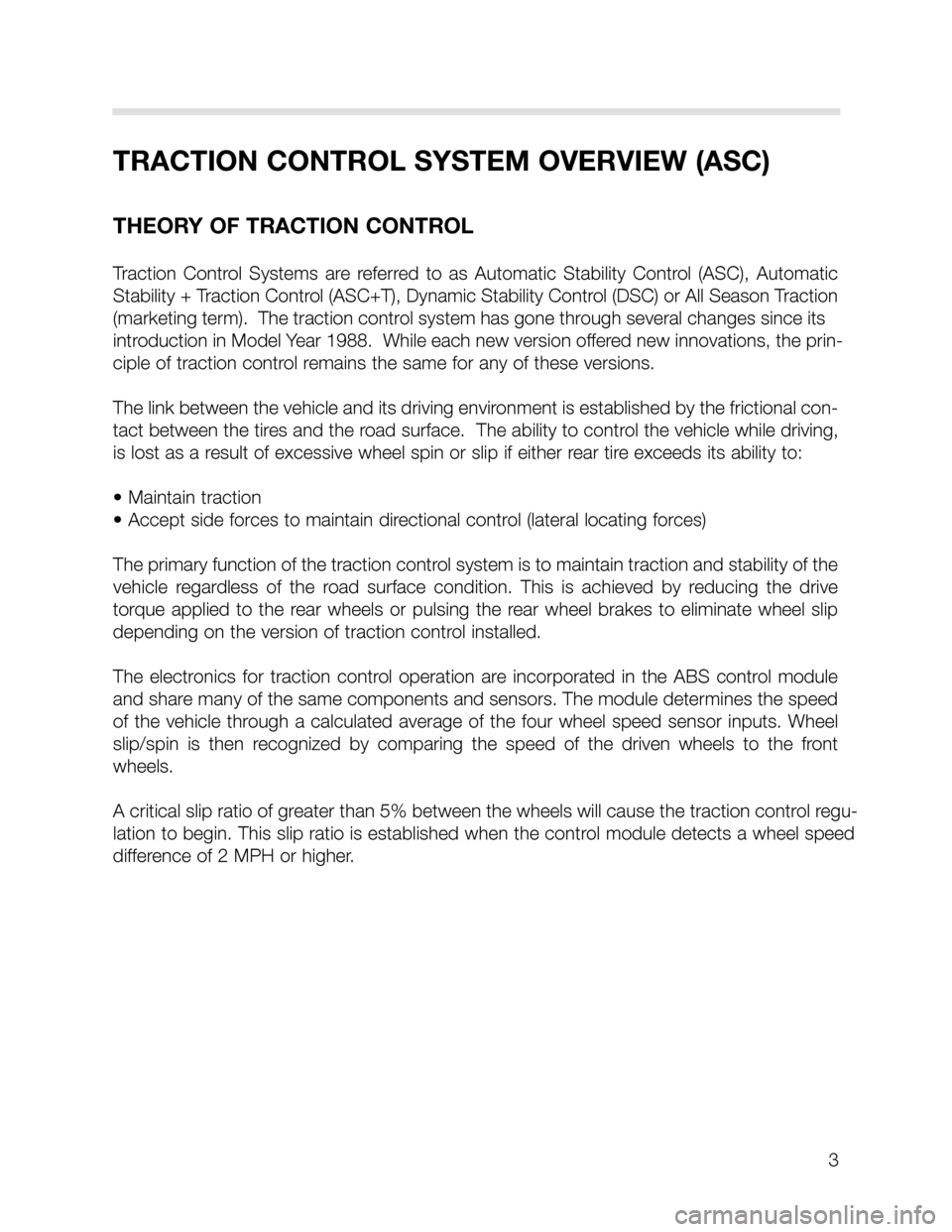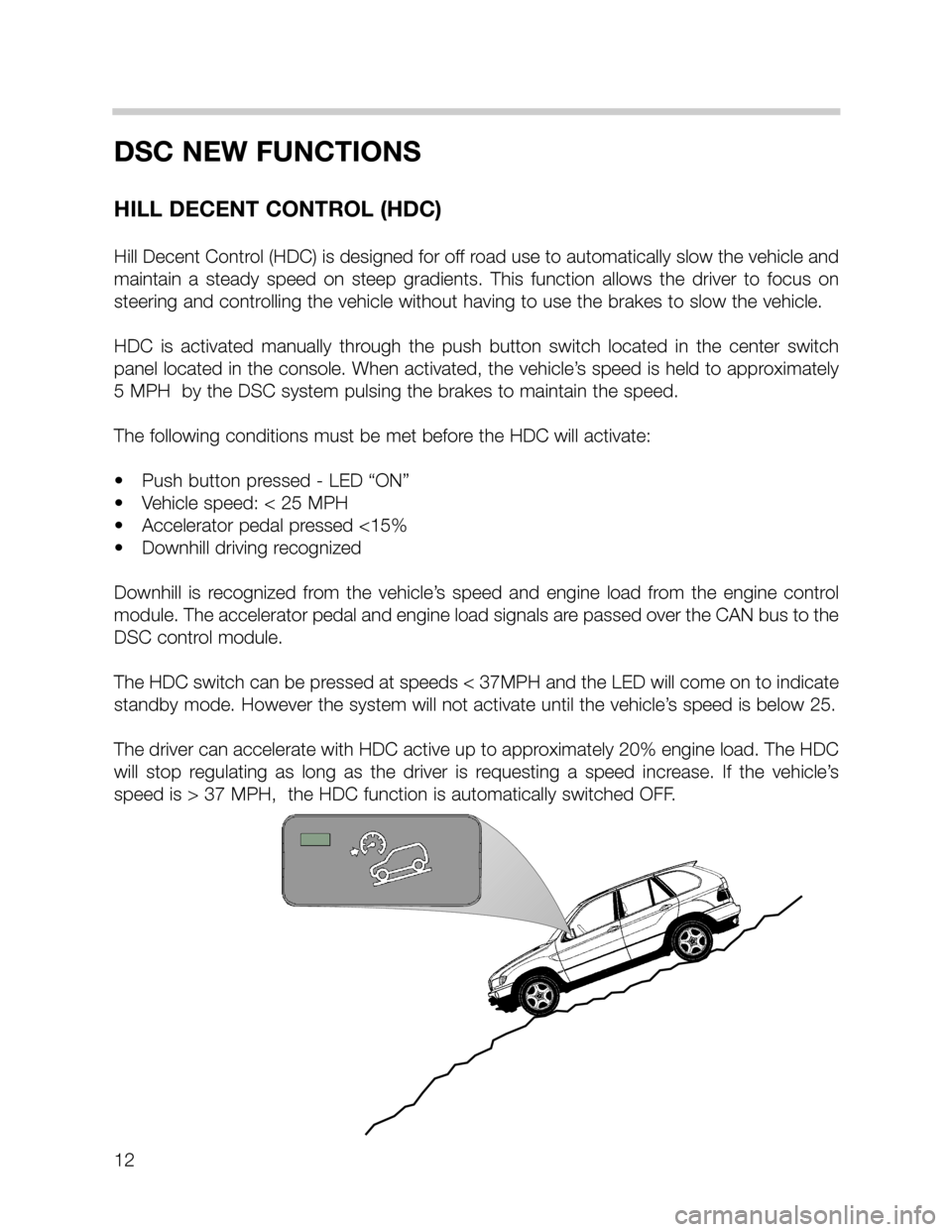ECO mode BMW X5 2000 E53 DSC System Workshop Manual
[x] Cancel search | Manufacturer: BMW, Model Year: 2000, Model line: X5, Model: BMW X5 2000 E53Pages: 24, PDF Size: 1.77 MB
Page 3 of 24

3
TRACTION CONTROL SYSTEM OVERVIEW (ASC)
THEORY OF TRACTION CONTROL
Traction Control Systems are referred to as Automatic Stability Control (ASC), Automatic
Stability + Traction Control (ASC+T), Dynamic Stability Control (DSC) or All Season Traction
(marketing term). The traction control system has gone through several changes since its
introduction in Model Year 1988. While each new version offered new innovations, the prin-
ciple of traction control remains the same for any of these versions.
The link between the vehicle and its driving environment is established by the frictional con-
tact between the tires and the road surface. The ability to control the vehicle while driving,
is lost as a result of excessive wheel spin or slip if either rear tire exceeds its ability to:
• Maintain traction
• Accept side forces to maintain directional control (lateral locating forces)
The primary function of the traction control system is to maintain traction and stability of the
vehicle regardless of the road surface condition. This is achieved by reducing the drive
torque applied to the rear wheels or pulsing the rear wheel brakes to eliminate wheel slip
depending on the version of traction control installed.
The electronics for traction control operation are incorporated in the ABS control module
and share many of the same components and sensors. The module determines the speed
of the vehicle through a calculated average of the four wheel speed sensor inputs. Wheel
slip/spin is then recognized by comparing the speed of the driven wheels to the front
wheels.
A critical slip ratio of greater than 5% between the wheels will cause the traction control regu-
lation to begin. This slip ratio is established when the control module detects a wheel speed
difference of 2 MPH or higher.
Page 12 of 24

12
DSC NEW FUNCTIONS
HILL DECENT CONTROL (HDC)
Hill Decent Control (HDC) is designed for off road use to automatically slow the vehicle and
maintain a steady speed on steep gradients. This function allows the driver to focus on
steering and controlling the vehicle without having to use the brakes to slow the vehicle.
HDC is activated manually through the push button switch located in the center switch
panel located in the console. When activated, the vehicle’s speed is held to approximately
5 MPH by the DSC system pulsing the brakes to maintain the speed.
The following conditions must be met before the HDC will activate:
• Push button pressed - LED “ON”
• Vehicle speed: < 25 MPH
• Accelerator pedal pressed <15%
• Downhill driving recognized
Downhill is recognized from the vehicle’s speed and engine load from the engine control
module. The accelerator pedal and engine load signals are passed over the CAN bus to the
DSC control module.
The HDC switch can be pressed at speeds < 37MPH and the LED will come on to indicate
standby mode. However the system will not activate until the vehicle’s speed is below 25.
The driver can accelerate with HDC active up to approximately 20% engine load. The HDC
will stop regulating as long as the driver is requesting a speed increase. If the vehicle’s
speed is > 37 MPH, the HDC function is automatically switched OFF.